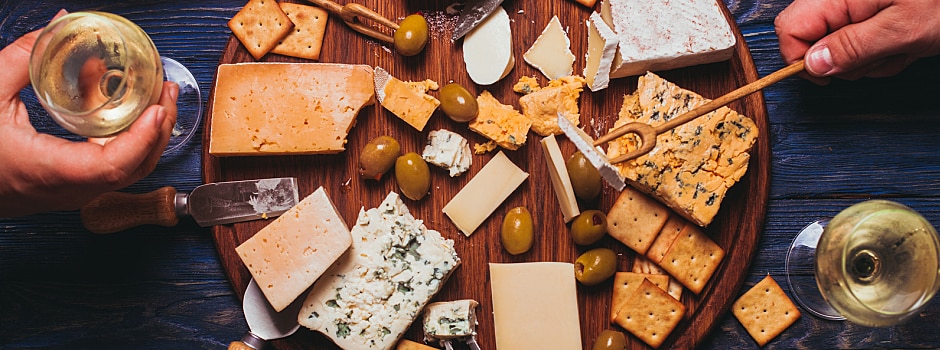If you're looking for a way to boost your bottom line without overwhelming your kitchen with more labor, you may want to consider adding wine and cheese to your menu. With a properly aligned strategy, this could help your restaurant attract new clientele and impress existing regulars.
Regardless of the size of your restaurant, here are some things to consider when planning to add wine and cheese to your menu.
Curate the Right Wine Menu
Wine is a great addition to any restaurant because it can improve the taste of the food it's served with and boost your numbers in a big way. While it's easier to obtain a wine license than a liquor license, it can be challenging to curate even a small wine menu.
If your background is in wine, you'll likely embrace the challenge. But if you can't even joke about calling yourself a sommelier, you'll want to start by considering what makes sense to pair with the cuisine you serve. For instance, Italian restaurants will want to sell Italian wines, and French restaurants will want to sell French wines. However, you can still get creative in terms of which regions your wine menu focuses on.
If need be, consult a wine expert or do research on how different wines pair with different flavors to create the ultimate balance. All restaurants should strive to offer at least a few wines in each of the following categories: white, red, rose, sparkling, and dessert wine.
Add Cheese Plates to the Party
Wine and cheese usually belong together, but some combinations can be downright disgusting, so it pays to study how the two pair together before you begin curating cheeses for a new menu. When choosing cheeses, consider the region, style, and age. And don't just think of the obvious cheese-producing regions when it comes to sourcing products because there are countries that produce outstanding cheese, such as Germany, and aren't exactly known for it.
As for style, your restaurant should have one or more of each of the following varieties of cheese: fresh, semi-soft, hard, firm, bloomy rind, and blue.
Get Creative with Your Offerings
Since cheese is typically served with accouterments, such as fresh fruits, jams or compotes, nuts, pickled vegetables, and condiments, your kitchen can get creative and concoct complementary accompaniments for the cheese you source. After all, anything you can do to make your restaurant stand out will help increase exposure and drive business, so don't be afraid to take risks.
The only way to know what works is to experiment, but finding a winning combination, such as mango chutney with St. Agur and candied pecans or strawberry jam with Tallegio and smoked almonds, is well worth the cost of research and development. Encourage your cooks to contribute ideas by setting up short brainstorming sessions before service on slower nights.
Having cheese on hand can also fuel creativity in your hot dishes, like in the baked cavatelli at Oxalis in New Orleans. There, you'll find house-made ricotta cavatelli coated with melted Gruyere and topped with Asian chili-garlic pork belly and a sunny-side-up egg. Clearly, you don't have to let your restaurant's cuisine limit your use of cheese.
Bottom Line
When executed strategically, adding wine and cheese to your offerings can be an effective means of boosting your restaurant's reputation, sales, and profits. It's not labor-intensive, either, so your kitchen will be thankful. Just make sure you have fun with it, and more importantly, that you make it fun for your staff and customers.
Related Articles

New Restaurant Revenue Streams: How Two Chefs Go Beyond the Menu
Here's what chef Brooke Williamson had to say about how she and her husband have creatively expanded their restaurant revenue streams.

How to Present New Menu Ideas to the Head Chef
Before presenting new menu ideas to the head chef, make sure to cover these bases and follow these tips.

Expanding Restaurant Business: When and How to Do It
There are many factors to consider—capital, time, staff, resources, systems, and more—when expanding restaurant business.

